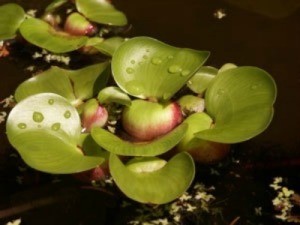
Question:
Anyone know how to make indoor water gardens? It's like the ones for
outdoors, but smaller containers for around the house. I read about
them in a Martha Stewart "Living" magazines a couple of years ago.
Grateful for any info on indoor water gardens. Thanks!
Crafts4Life from Kentucky
Answer:
Crafts4Life,
Here are some ideas for creating these small-sized water gardens:
Ideas for Containers
Clear glass works best as it provides greater visual interest (seeing underwater is half the fun!). Use small fish bowls, antique serving bowls or candy dishes, glass cylinders for floating candles, or wide-mouthed glass bottles. You should be able to find a myriad of inexpensive options at dollar and craft stores, Goodwill, antique shops and pet supply stores. And don't forget to look in your own kitchen cupboards.
Choosing Plants
Find plants at nurseries specializing in aquatic plants, at aquarium supply stores or any pet supply store that sells tropical fish. There are three basic classes of plants to look for: floaters, submersibles, and semi-aquatics, or plants with submersed roots and foliage visible above the surface. Mix up different types, or use them singly.
Some of the plants you come across at nurseries are meant for larger outdoor ponds. These can be used indoors as well, just keep in mind that you will eventually need to replace them when they outgrow the space. When adding plants, start by adding substrate to the bottom and then slowly fill the container until it is half full. Add and anchor the semi-aquatic plant first (then more water), submersibles second (more water), and floaters last (fill completely).
Some examples:
- floaters
- water lettuce
- water hyacinth
- lotus
- submersibles
- Anubias
- parrot's feather
- Elodea
- hornwort
- blood grass
- water lily
- Cabomba
- lace plant
- sword plant
A few of these will help oxygenate the water and reduce algae problems.
- semi-aquatic
- sweet flag
- arrowhead
- black taro
- bamboo
Anchor the roots of semi-aquatic plants with thoroughly washed pebbles, colored marbles, sand etc.
Growing Requirements
Light-Some of these plants will need as much as 12 or more hours of bright light each day. Water that becomes cloudy initially may right itself. Be patient. If it doesn't correct naturally, look for water clarifying products where you purchased your plants.
Water-You can use tap water, but let it stand at least 24 hours before adding plants to allow chemicals to evaporate.
Feeding-Wait 2 to 3 weeks before adding fertilizing pellets made especially for pond plants. You'll only need a tiny fraction of the amount required for an outdoor pond, so use sparingly.
Discarding Plants-Eventually, your plants may outgrow their space. Compost them or discard them in the garbage, not into local ponds and waterways where they may become invasive and harm native species.
Have fun!
Ellen
